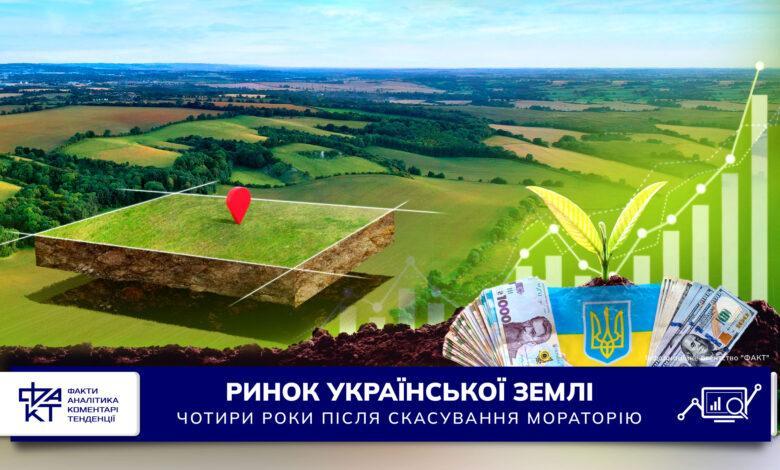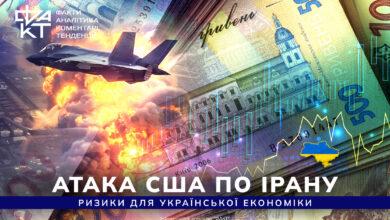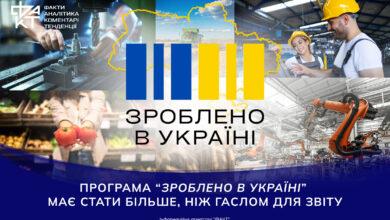Ukrainian agricultural land market: how the cost, demand and geography of transactions have changed after the moratorium was lifted

Four years have passed since the day when the 20-year moratorium on the sale of agricultural land was officially canceled in Ukraine. This decision, which had seemed politically suicidal for two decades, came amid a pandemic, economic turbulence and the prospect of war. However, despite all the circumstances, the land market not only did not fail, but gradually turned into a powerful economic indicator. It is interesting to assess how the actual dynamics of the process changed after the opening of the market and what determines the geography of land value today.
Between war and the market: what transformations have taken place
In July 2021, the moratorium on the sale of agricultural land, which had been in effect for more than two decades, was lifted in Ukraine. This decision had complex consequences for both the agricultural market and the economic, social and political structure of the country. Expectations were different: from fears of a total purchase of land by big players to forecasts of rapid growth in investments and modernization of agriculture. Four years later
According to the State Geocadastre, from July 2021 to June 2025, Ukrainians invested over 30 billion hryvnias in land. At the same time, more than 339,000 contracts were concluded, and the total area of sold plots reached 636,000 hectares. However, the most important thing in this is not the number of deals, but the dynamics: over the course of four years, the average cost of a hectare increased by 60%, demand stabilized, and the geography of prices reflected the real contours of the country’s social and security landscape. The market, which began with nervous anticipation and fears, managed to go through all stages during these four years: excitement, disappointment, stoppage, adaptation, moderate growth and structural strengthening. Its evolution is a story about attitudes to property, the boundary between public and private, the role of the investor in the agricultural sector, and how war affects the price of a hectare more than the fertility of black soil.
In the first months after the opening of the market, demand was predictably high. July 2021 yielded more than two thousand deals — and that was just the beginning. Buyers were ready to pay a lot: the average price per hectare was a record 95,700 hryvnias. It was a stage when the price was determined by emotion, the fear of losing a chance and the desire to secure property as soon as possible. However, you cannot deceive the market – already in the fall it became clear that the surplus value will not last. By December 2021, the price had tripled and was slightly more than 33,000 per hectare. However, the decrease in value did not mean a drop in interest, on the contrary, the number of transactions only increased. This meant that the market began to operate in a normal mode with more realistic expectations.
But everything changed on February 24, 2022. A full-scale Russian invasion brought the market to a near-complete halt. In March and April, almost no deals were concluded, that is, the market actually froze. However, individual transactions began to appear from May, but the numbers were symbolic: 323 deals for the entire country. It was a period of deep silence, but not because of the law, but because of the war. Fear, uncertainty, legal and physical difficulties, destruction of the notarial infrastructure in the south and east, mining of fields, flight of owners, unavailability of data — all this created an atmosphere of stagnation.
And yet the market turned out to be capable of self-recovery. Already in the summer of 2022, the number of deals began to gradually increase. There were not many of them – three or four thousand per month, but it was a signal that despite the war, land remains not only a resource, but also capital. Prices stabilized at the level of 35–39 thousand hryvnias/ha. By the end of 2022, the market has finally adapted to the military reality. New notary points, digital services appeared, and for many farmers, buying a plot of land became a way to save money in a situation where banks were a weak option.
2023 was a period of gradual strengthening. The monthly number of transactions varied from four to seven thousand, the price increased moderately, but steadily. If at the beginning of the year a hectare cost an average of 39,000, then by the end it was more than 42,000. Gradually, the market returned to a business pace, because the buyers were mainly farmers who had leased the land for many years and now wanted to legally secure the plot for themselves. At the same time, another important element appeared — the market began to be carefully monitored. It became clear that this sphere is not a marginal, but a full-fledged part of the national economy.
The new dynamics of 2024 were shaped by one important change: from January 1, the market became open to legal entities. Expectations were high, because many predicted an explosion of deals, the arrival of large companies, a new round of competition, but this did not happen. The reason was legislative restrictions – companies with foreign beneficiaries cannot buy Ukrainian land, and half of the ten agricultural leaders have foreign roots. So the market remained within the national capital. At the same time, since March 2024, transactions have gradually increased: more than nine thousand monthly. Deals worth a billion hryvnias have become commonplace, and the average price per hectare has risen to 50-52 thousand. By that time, investing in land again began to look logical and stable.
The year 2025 proved that the market had finally “grown up”. Compared to the second half of 2021, the number of deals increased by 13%, and the total amount of capital in deals almost tripled: from 2.85 to 8.22 billion hryvnias. Now a hectare costs an average of 60.7 thousand hryvnias. This means that land is becoming more expensive again as a result of the formation of a new level of demand. Land is now being bought as a tool for long-term storage of value. It becomes an asset that has not only economic, but also reputational weight.
It should be noted that the geography of prices reflects the security and social map of the country. The most expensive lands are located in the Ivano-Frankivsk region. There, a hectare costs 126.6 thousand. UAH It is followed by Lviv Region (118.3 thousand UAH), Kyiv Region (89.4 thousand UAH) and Ternopil Region (86.9 thousand UAH). These are areas far from the front, with developed logistics, good demand for rent and an active private sector. At the same time, the situation is different in the frontline regions. In Kharkiv Oblast, Zaporizhzhia, Kherson Oblast, Chernihiv Oblast, Mykolaiv Oblast, and Odesa Oblast, a hectare costs 38–42 thousand hryvnias. This shows not only the consequence of the risks, but also how deeply the war affects the economy.
Analysis of the dynamics of the land market in Ukraine over four years
The Ukrainian agricultural land market has become an arena where notions of justice, property, law, fear and trust collided. It is these concepts, and not exclusively economic models, that have determined how the market has developed over the past four years. In this space, the price of land is rather the materialization of a collective perception of risks, prospects, and belonging.
The first thing that catches the eye when analyzing market dynamics is that deregulation alone is not a guarantee of explosive price growth. The expectations placed by many on market opening were based on a model where liberalization automatically stimulates activity and activity creates added value. However, the Ukrainian case shows: where the market has been “frozen” for decades by political compromises, real mechanisms are included with great delay, and the reaction is fragmented and heterogeneous. Lack of institutional trust, lack of transparency in deals, and difficulties in accessing financing delay the realization of potential even in peacetime.
However, peacetime in Ukraine ended in the second year of market operation. That is why the analysis of this period cannot be separated from the analysis of war as a factor of economic behavior. The war not only slowed down the pace, but also affected the logic of agreements. Land ceased to be an asset that is bought for investment purposes, it began to be bought as a certain stability. Paradoxically, land, despite its vulnerability to battles, occupations and mines, turned out to be one of the few types of property that does not lose its meaning in war. This is the key to understanding why the market revived after the stop in 2022.
Price indicators also require a separate understanding. The formal increase in the value of a hectare by 60% in four years looks like positive news, but this increase is not the product of a competitive market, but rather the result of structural redistribution. Land becomes cheaper in dangerous regions and more expensive where there is a demand for long-term maintenance. Ivano-Frankivsk region, Lviv region, and Ternopil region are regions with fertile soil, which are perceived as safe and promising in case of deepening of the military crisis, therefore they form the price elite. At the same time, the fact that the frontline regions sell land essentially at cost price demonstrates that the value here is determined by uncertainty about the future, and not by the quality of the soil.
In this context, the gap between legal norms and reality is particularly noticeable. Formally, foreigners cannot buy Ukrainian land, but de facto half of the largest agricultural companies are of foreign origin. Workarounds, corporate shimming, trust management mechanisms — all of these exist, but remain in a gray area that government regulation does not yet cover. This imbalance creates a false impression of fair competition. While ordinary farmers buy land on a shoestring budget, big players manipulate legal schemes. The result is not a market of equal opportunities, but a market of segmented strategies.
The logic of our state in this process, which has been in the role of an observer and not a moderator for four years, deserves special attention. It did not offer targeted mechanisms for the protection of small farmers, did not stimulate cooperation, and did not formulate public policy to preserve the integrity of the land bank. And although the infrastructure — cadastre, notary, reporting — functioned satisfactorily, the main thing was missing: the political will to see the land not only as an asset, but also as a national resource. As a result, the market formed itself, without a state framework, remaining a market of situational solutions, not long-term models.
There is another important, but often overlooked layer — the socio-emotional attitude to the land. For part of society, selling a plot is a forced decision due to desperation, illness, departure or job loss. For the other part, it is an investment in descendants, a way to get a foothold, to create a future. And although in statistics these cases do not differ, in fact they have the opposite origin. Therefore, talking about the “success of the market” without taking into account these motivations is the same as analyzing the demand for real estate in a war zone based solely on the volume of transactions.
All this leads to the main point: the land market in Ukraine is both an economic tool and a mirror of deeper structures — political, social, emotional. In four years, he became a litmus test on which all the traumas and hopes of Ukrainian society were revealed. From hope for reform to fear of devaluation, from the desire to have one’s own to being forced to sell, from the desire to invest to banal survival.
Therefore, the agricultural land market in Ukraine, in its fourth year of operation, shows stabilization in conditions of prolonged instability. Its dynamics were formed under the influence of several determining factors: the gradual adaptation of society to the legal circulation of land, limited access to capital, segmented geography of demand, and the long-term influence of the military factor.
The price growth recorded over the years reflects not so much competition as selective concentration of capital in safer regions. Buyer behavior remains mostly cautious, and transactions are defensive and utilitarian in nature. The market did not create new institutional forms of management, did not change the structure of the agricultural sector, and did not create mechanisms for strategic land consolidation. It was formed as a tool for individual decisions in an unstable environment, which ensured its viability, but did not make it a full-fledged economic pillar. Structural growth in the future is possible only if the role of the state is reviewed, which should ensure equal access, transparency and a long-term perspective for those who work with land as a productive resource, not just as an asset. It has remained the value that Ukraine is ready to buy, protect and maintain, and this is the main evidence of the formed attitude towards land as a permanent object of ownership and an economic tool.





